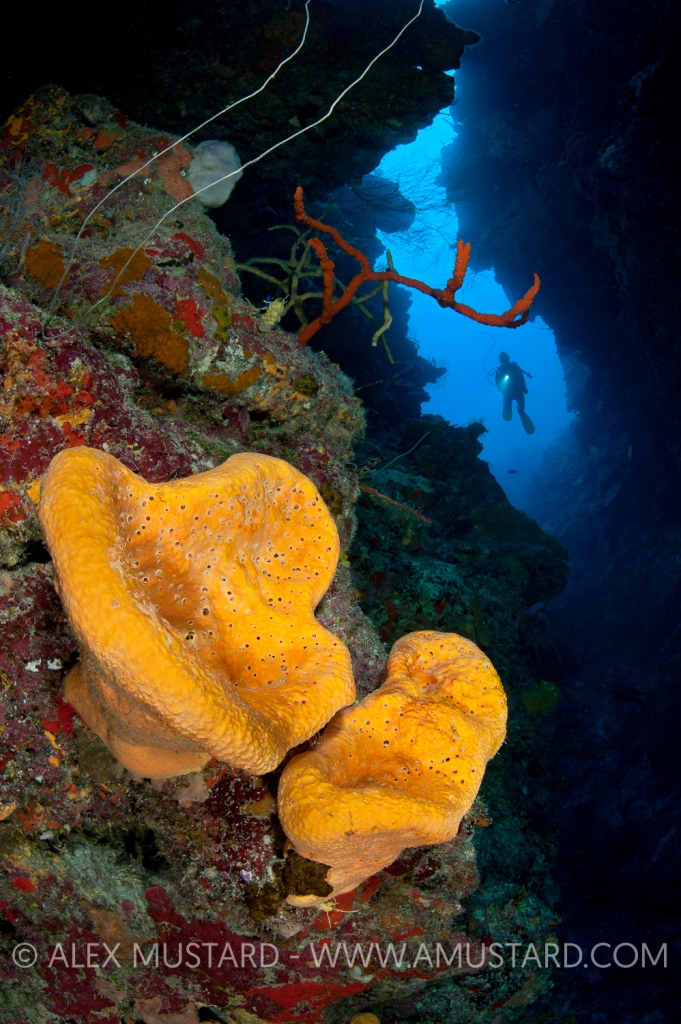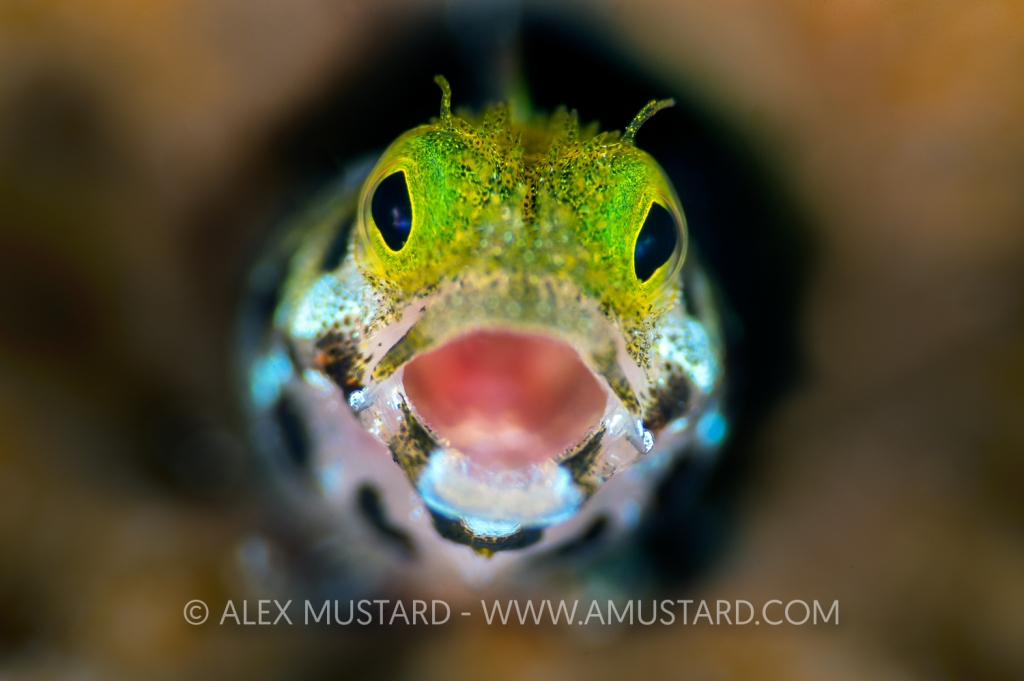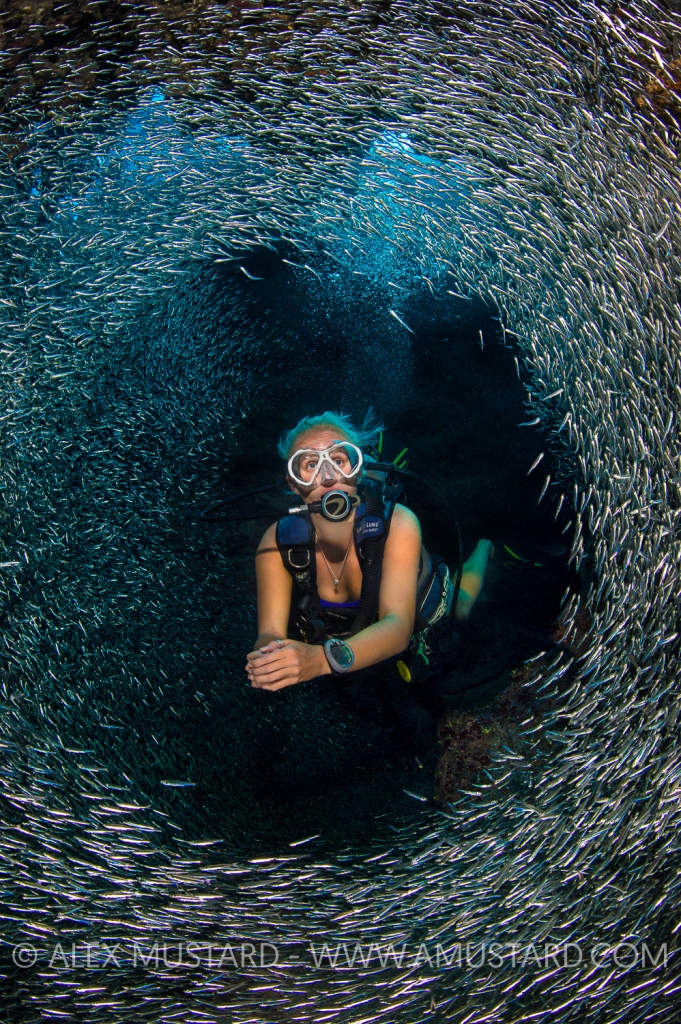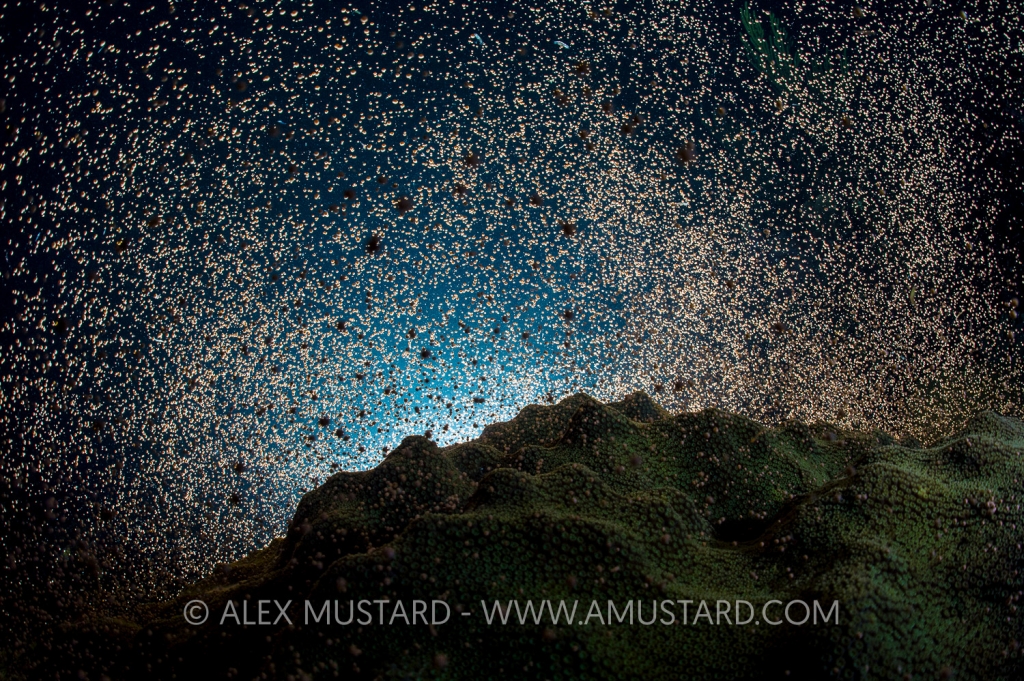Alex has taught more than 20 editions of Cayman Digital Madness, his underwater photography workshop week in Grand Cayman, in conjunction with Ocean Frontiers and based at the luxurious Compass Point Resort. Much of the teaching in his book Underwater Photography Masterclass evolved during these workshops. The theme of these workshops is Controlling, Understanding and Mastering Light Underwater.

Alex says: “This is the ideal first photo workshop with me as it focuses on the fundamentals of underwater photography. I do not teach underwater photography with a paint by numbers approach. I will tell you what to do, but I want you to understand why you need to apply that technique in that way to get the killer image. I want you to leave my workshop a more knowledgable and better underwater photographer. I want you to understand what goes into stunning shots, so that you can take those stunning shots on dives, whether I am there to help you on your next trip or not. This is what makes this workshop special.”
LIGHT
Light after all is fundamental in photography and when used well transforms a mundane scene into the extra ordinary. The workshop goes back to basic principles of light and looks at the nature of different light sources underwater. It builds from these fundamentals to show how these different types of light must be controlled and can be exploited in different ways to create stunning underwater images, with different effects and moods. The main focus of the week is developing a true understanding and mastery of lighting in wide angle photos.

We start the week focused on getting CFWA lighting perfected, but for standard images and for different effects or moods. Then in the middle of the week I encourage you to shoot available light on the stingrays and Kittiwake wreck, and build you knowledge on the nature of ambient light underwater. At the end of the week we bring these two skills together, creating close focus wide angle images with expert control over foreground lighting and background ambience. Although, of course along the way we shoot many other subjects, including doing plenty of macro and even bigger creatures like turtles, tarpon and sharks.
THE WORKSHOP
Traditionally Digital Madness is run during January and is focused on lighting, but it does move it through the year to catch different marine events in Grand Cayman. Alex often runs two workshop weeks back to back. The teaching content of the two weeks is the same, so it is rare that people stay for both weeks.
The group size is limited to 14 photographers (increased from 12 due to Ocean Frontiers new boats) with a dedicated dive boat for the week. Pretty much every dive trip is non-standard. You just can’t do these dives, in this way, at any other time. The itinerary chosen by Alex to maximise the opportunities for images and made possible because of his very long relationship with Ocean Frontiers. Alex adds “we are always the first dive boat off the dock and the last one back. I am very grateful for the special support that they give to my groups.”

Digital Madness is not a week where you will see all the dive sites of Grand Cayman. Instead Alex will focus on and repeat the most productive photographic sites. This enables the whole group to get familiar with the photographic opportunities available. Repeating sites allows you to shoot something, look at the results (with Alex), refine your technique and then produce a really polished final image. It also means that if you see someone else’s photo in an image review session, you have the chance to be inspired by it and can have a go at something similar.
This approach also means that if you see an interesting macro subject or critter you can change lens and shoot it on the later dive. Although the workshops are aimed primarily at wide angle photography there are many first class macro subjects. Ultimately the whole workshop is about diving for photography, not just taking pictures while you dive.

CAYMAN SUBJECTS
Reliable and diverse subject matter and consistent underwater photography conditions are essential for a successful workshop. Grand Cayman delivers in abundance. Cayman’s wall dives are famous and their craggy nature, cut with canyons and populated with pinnacles provides the diverse topography ideal for wide angle. Colourful sponges and gorgonians adorn the walls and provide the highlights of colour for our images. The East End’s shallow dives are cut with caves and caverns providing atmospheric caverns for both moody available light photography and creative techniques such as off camera strobes. Both types of dive site have plenty of large creatures (turtles, groupers, tarpon, eagle rays), reef fish and macro subjects

The photogenic Kittiwake wreck offers so many angles for images we’ve nicknamed her the wreck of a 1000 faces! Outside she is an ideal depth for Magic filter photography and her internals are a perfect studio for off camera strobe images. Previous workshop attendees have already had a clutch of victories in International Photo Contests with images taken of her and a handful of magazine covers.
Grand Cayman’s stingrays are famous around the world, but you won’t get amazing photos of them if you join a normal tourist trip to Stingray City. Fortunately, on Alex’s Cayman workshops we have dedicated stingray photo sessions, trips that you cannot do as standard dive charters, where we usually have the rays to ourselves in the optimum photo conditions. “Stingrays are also relatively easy to shoot in the right conditions, so everyone tends to fill their boots (and memory cards),” says Alex.

If you are into macro and particularly super macro then you will love tube blennies. The most commonly seen are the cheeky secretary blennies, with their big goggly eyes. “I know where 100s of these live,” say Alex “so just tell me what type of coral you want as a background! The other species we go after are the golden phase rough head blennies, which can be hard to find, but I have a spot where we can find half a dozen in a 10 minutes. Warning the tube blennies are much, much smaller than people think. Everyone always thinks they are about the size of little finger, but they are actually more like a piece of spaghetti.”
The East End of Grand Cayman is also home to an healthy population of Caribbean reef sharks and we can often have close passes on the dive sites close to Ocean Frontiers. Don’t think of this like shark feeds in other parts of the world. The sharks will come close, but not right up to you. The best lenses are not wide angle, but mid-range. But as long as we setup for a reef shark on the reef type shot we can usually get very good results.

Type “Grand Cayman” into the Stock Search Tool on this website to see the range of images that are possible.
SEASONAL WORKSHOPS
January is the traditional time of year for Digital Madness. It is a wonderful time of year to visit the tropics and escape the cold of the northern winter. Alex adds “ I chose January as the ideal time for a workshop based on lighting. Without giving away too much of my detailed knowledge of photography in Cayman, I believe the conditions are best in January for several subjects. The lower angle of the sun provides more shade on the north wall in the mornings, plus gives a greater variety of angles of illumination on the Kittiwake wreck at this time of year. The stormier winter weather also creates the most photogenic ripples on the Sandbar at this time of year, which are so important for black and white stingray photos, when shot at the right time of day and in the correct lighting conditions. Also our favourite critter dive, an East End secret, has much better visibility in January.”

“Despite being tropical, Cayman has a definite summer, typified by glassy calm seas and water so warm that you cannot get cold, however long you dive” says Alex. The August workshop is aimed to catch one of the most amazing spectacles on Cayman’s reefs, when the caves and caverns of the East End entirely fill with silversides. Not only is this one of the most amazing dive experiences going, especially when you are entirely engulfed by a school of tiny fish, but if offers fantastic photographic opportunities. “There are so many options, whether you use the silversides as a main subject, or as a frame for a diver or the many predators that are attracted to the schools” says Alex. Note that the silversides are a non-lunar event so it is impossible to guarantee them. Calmer summer weather is also ideal for shooting split levels of the Stingrays, particularly when dark, afternoon rain clouds gather. And of course the reefs still offer all the classic wide angle and macro of other times of the year.

The third option is a September workshop, which is definitely the most special because it is timed to coincide with coral spawning. “Back in the days when I worked as a marine biologist I made the first reliable predictions of coral spawning in the Cayman Islands and with Steve Broadbelt, a founder of Ocean Frontiers, was the first person to see mass spawning there,” says Alex. “We were in all the newspapers (on the island)!” The aim of this special workshop is to dive at night at photograph this amazing spectacle that takes place over 4 nights, with different species getting in on the act on each night. There is also classic Cayman daytime dives too.
GETTING THERE
Grand Cayman is also very easy to reach with direct flights from many North American hubs and also from Heathrow (UK). The British Airways flight from London is probably the easiest route from Europe, but alternatively you can fly through Miami. Being trans-Atlantic most airlines have generous baggage allowances. If you are coming from Europe or the West Coast of the States (or further afield – Hong Kong and Kazakhstan are the current record holders for the distances people have travelled for the workshop) I recommend getting in at least the day before so that you have time to acclimatise. The workshop is always a packed program, I try to squeeze as much into the week for you as possible.

Contact Lesley@oceanfrontiers.com to find out about packages and the next availability on Cayman Digital Madness.